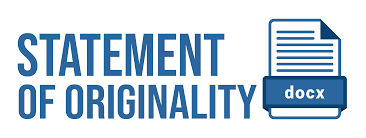Gambaran sebaran kondisi terumbu karang di perairan Kecamatan Sangkulirang dan Sandaran Kabupaten Kutai Timur
Coral reef distribution of Sangkulirang dan Sandaran Waters
DOI:
https://doi.org/10.30872/jipt.v1i1.417Keywords:
Sangkulirang, Sandaran, coral reef, status, distribution, percent coverAbstract
Sangkulirang and Sandaran as the most northern coastal districts of East Kutai Regency with status of under developing area and yet optimize in accessibility, thus also yet optimal in environment management and observation in this term the coral reef ecosystem. In order to providing the coral reef status information in Sangkulirang and Sandaran District, and further the result could be consider as database in evaluation of future change in coral reef status due to the coastal area development, then this study were conducted in those two districts with field data collecting was held at October 12th - 17th, 2012. The coral percent cover data collecting and analysis were using method of lifeform line intercept transect according to English, et al (1994) and Keputusan Kepala Badan Pengendalian Dampak Lingkungan No.47 year 2001, while the reef condition category were determined from the life hard coral (HCL) percent cover by based on Keputusan Menteri Negara Lingkungan Hidup No.4 year 2001 that divided into four category: 1) poor/bad (HCL < 25 %), 2) fair/moderate (HCL 25% - < 50%), 3) good (HCL 50% - <75%), and excellent (HCL ≥ 75%). The data of reef distribution and area wide were obtained by direct GPS plotting in the field survey with satellite image assist, and further processed using GIS program. According to the result, the coral reef in Sangkulirang and Sandaran District both in same condition that categorize into fair/moderate condition with each coverage of HCL 48.1% and 41.4%, and the combine in average HCL 45,9% also in the same category. Overall of both districts estimated had 2,221.57 ha of coral reef area with condition vary from poor/bad till good category. 761.27 ha of coral reef was estimated in Sangkulirang District and 1,460.30 ha in Sandaran District. The coral reef area in both districts commonly forming a narrow stretch of reef develop along the edge of drop-off bathy profile. Factors of limitation and degradation toward the coral reef development in both districts are: i) non-anthropogenic (nature) factor, majority the turbidity and sediment load from river estuaries and sea current and wave, and ii) anthropogenic (human) factor in activities of destructive fishing method especially by explosive fishing.








